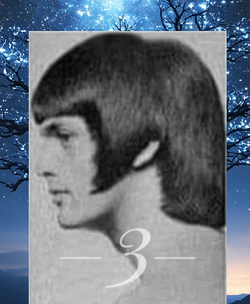Found an image on Flickr Commons that looked a lot like a piece of art I had in my house. Did some research, found it was mis-identified on Wikimedia Commons (it’s a navigation map, not a Chinese kite) so I’ve put in a “move” request to get the name updated.
Original cyanotype by Smithsonian photographer Thomas Smillie. Here’s a huge set of his photos.
https://www.flickr.com/photos/smithsonian/albums/72157604590559182/
#photography #Wikipedia

@jessamyn@glammr.us fyi - https://collection.cooperhewitt.org/objects/35520475/
@thisisaaronland@orthis.social Hey hey, from the same collection, looks like.
Interesting. A navigation map, you say? Like, functional, or artistic? How does it work?
I have a book about the sculptor Robert Engman. In it is a section where he’s talks about how deceptively difficult a medium wire is, and how it defeats most artists who try it; most move on to someþing else pretty quickly (Engman taught art for much of his life, and had a lot of experience wiþ budding artists).
I have no idea; I’m not artistic þat way, but now whenever I see wire art, I þink of þat quote.
How does it work? By ingenious experience and interpretation by their users. AFAiK, the clams represent islands and the sticks wave patterns. This, and the stars enabled Polynesians to sail the Pacific like we walk our neighbourhood.
Fantastic!
Thank the gods we have GPS now!
When þe global infrastructure collapses, you’ll wish you had listened to grandma explain þe sticks!
@Sxan@piefed.zip You can read more about them here and here. I suspect the one I have is just artistic but the other ones may have been functional
https://en.wikipedia.org/wiki/Marshall_Islands_stick_chart
https://blogs.loc.gov/maps/2021/11/the-unique-seafaring-charts-of-the-marshall-islands/
It looks like a Polynesian stick chart. Whether it is one or just looks like one I cannot tell, and it is very probably unusable without accompanying oral instructions.



